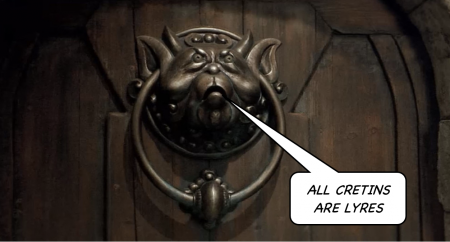Adjacent possible
|
The JC’S favourite Big Ideas™

|
A concept coined by Stuart Kauffman that contemplates the path-dependency of evolutionary or iterative processes — dynamic systems and the like — and which is at the same time obvious enough to go without saying (though it wasn’t said, as such, until Kauffman coined it in in 1990s), but also surprisingly profound and counterintuitive, and challenging to the hideous reductionist worldview.
The “adjacent possible” is the as-yet unexplored territory made directly accessible by the existing state of knowledge (or system configuration). Development that’s just the proverbial door-knock away. As such it’s a limit on immediately available progress: you can only knock on doors you can see, not the ones beyond those immediate doors (who knows how many doors lie beyond!)
A constraint
The adjacent possible is both a constraint and an opportunity: a constraint because it is to observe that at any time and in any given state of knowledge, one can only develop into that adjacency. Possibilities beyond the immediate door or not just invisible to you: they don’t exist at all yet. They can’t exist — even become possible — until you’ve open the nearby door.
So, were Einstein to drop through a a portal in the space-time continuum to present his theory of special relativity to the Royal Academy in 1600 Newton and his buddies would have laughed him out of court — to the extent they understood him at all — because Einstein’s mechanics depend on so many intellectual and technological developments — contrivances, you might almost say which were not adjacent to the current paradigm (Maxwell’s equations, Lorentz transformations, Boltzmann’s statistical mechanics and so on[1]). There’s a path dependency, that is to say: you cannot “skip links” when you jump.
Similarly, the proposition that any intermediate state in the evolution of an organism must have served its own evolutionary purpose at the time (for example prototypes of the eye — light-sensitive patches of skin, say, which could not see must still have had some use).
An opportunity knocks
The adjacent possible is at the same time an opportunity because the very act of knocking on that immediate door and finding out what is behind it — pushing into the adjacency, as it were — incrementally expands your universe and in itself creates — not reveals: creates — further adjacencies, and further possibilities. It is this non-destructive development path that all knowledge goes through. Some rooms you might have discovered earlier may remain useful (for example, mathematics) others may lose their practical utility (phlogiston, ether, the humours, the Dewey decimal system etc.) but in all case they remain tools in the kit — there is no right or wrong about them; just potential — even metaphorical — applications.
Perspective chauvinism
That much is obvious. However as we inevitably look at developments in hindsight it is easy to to diminish the intellectual significance of this. It is not just that one distant possibility depends on on a series of iterations through adjacent possibilities, but that the very possibility of those distant two possibilities is contingent on on arriving at the adjacencies. This is a way of saying “truth is socially constructed”. Things are really not there until you invent them.
A good example is the the Dewey decimal system. Until the digitisation of information it was impossible to imagine managing information without a physical organising schema like the Dewey’s system, and impossible to see how redundant such a critical organising schema like the Dewey system would become.Only once the digital revolution had happened did digital text become a possibility, and only once that possibility had become an actuality did an alternative means of sorting, categorising, and retrieving information become part of the adjacent possible.
The enormous “palace” metaphor that does not bear close examination
A common metaphor is an enormous palace to which you can only gain access by my opening and exploring each room, but it does not capture the contingency of the possible. You are discovering so much as inventing the palace every time you open a door on a new possibility.
This is the profound difference between the reductionist disposition and the pragmatic one: Reductionism says, “the universe is a settled, finite, determinable thing. The job of science is one of discovery”; pragmatism says, “we build our own worlds: the job is one of of invention and imagination.”
David Graeber, quoted by Adam Curtis, puts it nicely:
“The ultimate hidden truth of the world is that it is something we make, and could just as easily make differently.”[2]
The formal and the informal
Regard the formal part of any system or structure at any time as as those rooms in your hyper palace whose doors you have already opened, and whose territory you have already explored.
The adjacent possible is, by definition, informal. It is connections that have not yet been made; books that have not yet been written.
Your formal structure both facilitates and constrains it: the lifts, kitchens and water-coolers at which serendipitous encounters germinate ideas and frame opportunities; access-controlled departments, information barriers, silos, fiefdoms, which prevent the free-flow of information.
As with any system, design can therefore change the likelihood, nature and rate of innovation.
Pixar designed the architecture of its building to oblige people to walk past people they might not otherwise see. You could do it too, by calling a physical meeting, where people have no choice to be engaged, rather than a large online Skype gathering, where no one pays the blindest bit of attention.
See also
References
- ↑ No, I have no idea what any of those things are.
- ↑ The Utopia of Rules: On Technology, Stupidity, and the Secret Joys of Bureaucracy